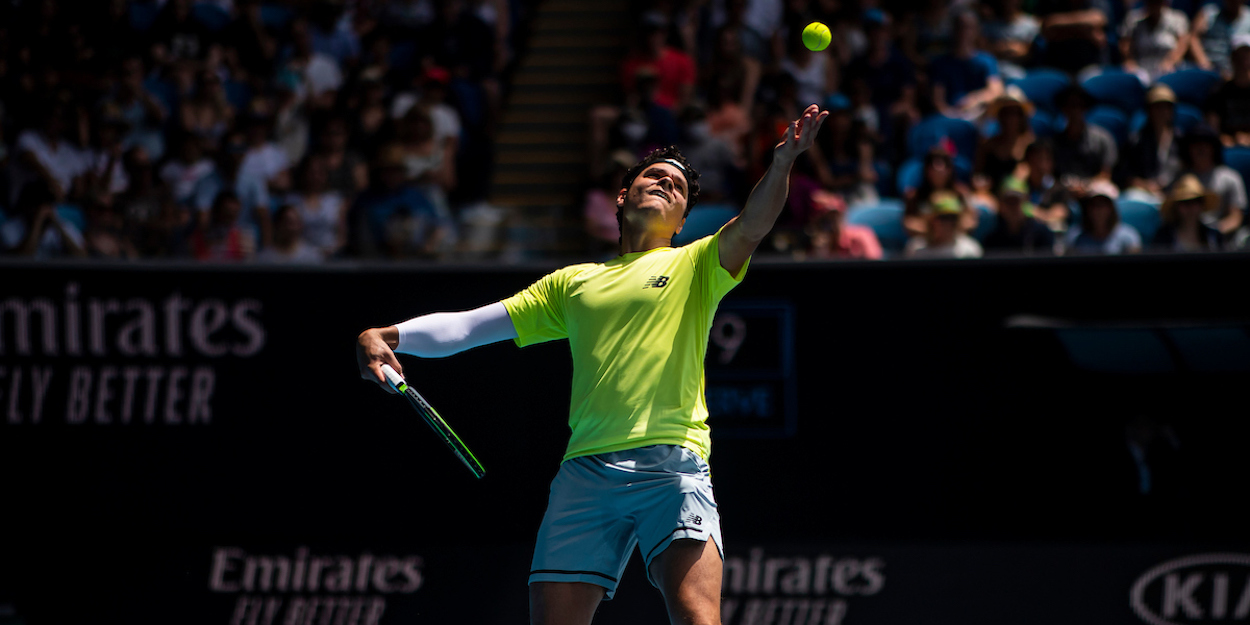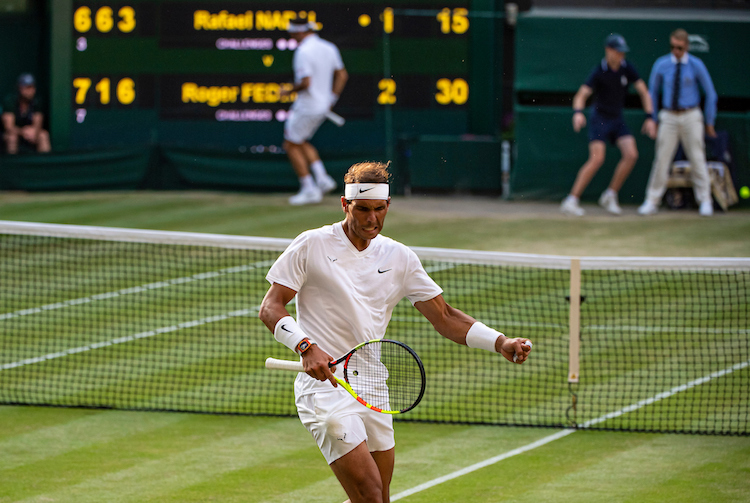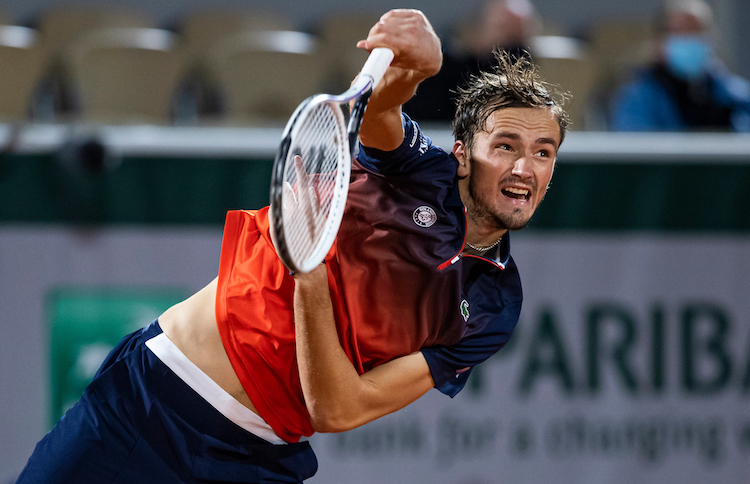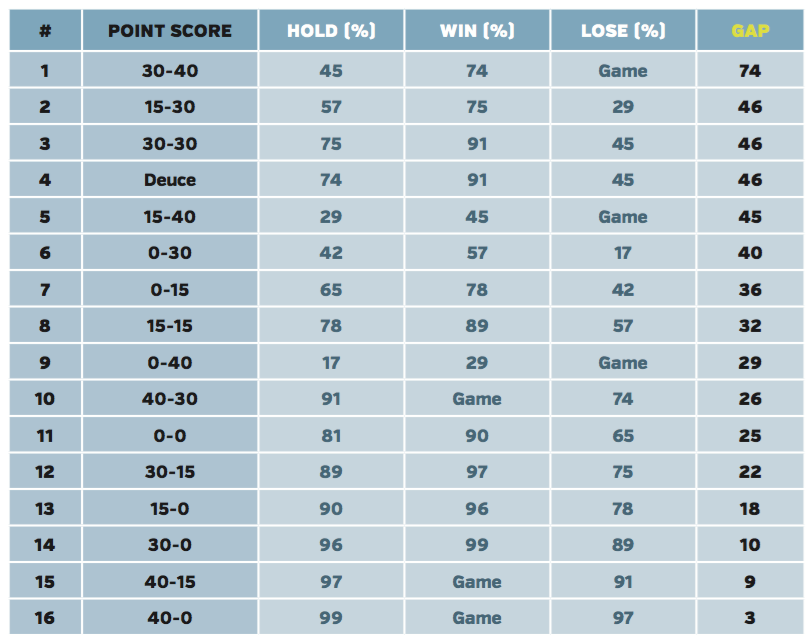
World renowned tennis strategy analyst says knowing the percentages can only improve your understanding of the game
Craig O’Shannessy, the world’s leading tennis strategy analyst and founder of BrainGameTennis.com, outlines drills that can demonstrate the likelihood of holding serve from different points scores in a game
We have forehand drills. We have backhand drills. We have serve, return and approach drills. So why in the world are point score drills not an integral part of our practice court regimen?
The answer is simple. We have never fully known what percentage chance a player has of holding serve – until now. It’s high time to improve your practice sessions and add specific point score drills to the mix. The following data set is an average from the top 100 players on the ATP Tour in the 2019 season. You may not quite be at that level yet, but at least you have this big data as a guide. Enjoy the following nine drills, all based on specific point scores when serving in a game.
Point score 1: holding serve (81 per cent)
The top 100 held serve 81 per cent of the time in the 2019 season. So they are holding serve eight times out of 10, or four times out of five. It’s a really good threshold for you to aspire to. The year-end top 10 players combined to hold serve 86 per cent of the time, but let’s focus on the top 100 average for now.
Drill 1: serve five straight games
I want you and your practice partner to go and play a modified practice set in which you can specifically work towards this goal. I want you to serve FIVE straight service games. No back and forth. Five in a row please. If you hold four out of five times you win, because that’s 80 per cent held. It’s obviously even better to hold five out of five, but we don’t chase perfection. Four out of five works. If you hold serve only one, two or three times out of five, you lose the set.
Point score 2: holding serve from 15-0
When the top 100 won the first point of their service game and advanced to 15-0, they went on to hold serve a staggering 90 per cent of the time. That’s super-impressive. Milos Raonic was from another planet at this metric, holding serve 98 per cent of the time (338 times out of 346). Tennis is a sport that is much easier (physically and mentally) when we get to play from the front, so winning the opening point of your service game is a big deal.
Drill 2: start each game from 15-0
Play a regular set, with the exception that the server starts each service game from 15-0. It’s great to get a feel for what serving is like when you continually have the lead – and how hard it is to break when you opponent gets an early one-point lead in their service games. Here’s the catch: the first player to break serve wins the set. Play a tie-breaker at 6-6 if it gets that far, and have fun playing a best-three-out-of-five-sets match.

Playing the percentages – Being aware of the score and of the subsequent likely outcome of the game can help a player decide which patterns of play to follow
Point score 3: holding serve from 0-15
When the top 100 players dropped the opening point of their service game and trailed 0-15, they still had a 65 per cent chance of holding serve, which is essentially two out of every three service games.
Drill 3: start each game from 0-15
The goal is to win three CONSECUTIVE service games. If you win your first service game, serve again, and serve a third if you won the first two. If you win three in a row you win the drill. But whenever you lose your serve, your opponent now has the opportunity to win three in a row.
Point score 4: playing from one point ahead (15-0, 30-15, 40-30)
Once you get one point ahead, your chance of holding serve goes to around 90 per cent for all three point scores: 15-0 is 90 per cent, 30-15 is 89 per cent and 40-30 is 91 per cent. They are all statistically the exact same point score.
Drill 4: play a set starting at all three point scores In the first service game for each player, start at 15-0.
In the second service game each starts at 30-15 and in the third service game they both start at 40-30. Play a set with a tie-break at 6-6. You have the exact same chance of holding serve from all three point scores.
Point score 5: playing from one point behind (0-15, 15-30, 30-40)
The percentage chance of holding here drops the further the server gets into their service game because the finish line gets closer. The chance of holding from 0-15 is 65 per cent, while 15-30 is 57 per cent and 30-40 is 45 per cent. Serving from a point behind can be very mentally challenging for the server.
Drill 5: play a set starting at all three point scores
In the first service game for each player, start at 0-15. In the second service game both players start at 15-30 and in the third service game they both start at 30-40. Play a set with a tie-break at 6-6. It’s definitely a mental battle to hold serve when trailing in the point score.
Point score 6: playing even (0-0, 15-15, 30-30, deuce)
The percentage chance of holding serve when the point score is even is always with the server, but it drops slightly the further into the game you go. Here are the percentage chances of holding: at 0-0, 81 per cent; at 15-15, 78 per cent; at 30-30, 75 per cent; at deuce, 74 per cent.
Drill 6: serve from each of the four point scores
This drill lasts for exactly eight games. Each player serves a game from 0-0, then 15-15, then 30-30 and then deuce. The pressure grows the further into the drill the server gets. Play a tie-breaker at 4-4 and play best two out of three sets.
“It’s great to get a feel for what serving is like when you continually have the lead – and how hard it is to break when you opponent gets an early one-point lead in their service games”
Point score 7: two-point differences (40-15, 15-40, 30-0, 0-30)
These points scores fluctuate wildly. The percentage chances of holding from all four point scores are: at 40-15, 97 per cent; at 15-40, 29 per cent; at 30-0, 96 per cent; at 0-30, 42 per cent.
Drill 7: serve from each of the four point scores
Play four service games each from all four point scores, starting with 40-15, then 15-40, then 30-0 and finally finishing with the tough scoreline for the server from 0-30. Play two rounds of this drill, so 16 games in total. Some of the games may last for only one point. If the game score is 8-8, play a regular tie-break to decide the set.
Point score 8: three-point differences (40-0, 0-40)
A lot of mental fortitude is required to dig your way out of a three-point deficit. The top 100 held serve 99 per cent of the time from 40-0 and held only 17 per cent of the time from 0-40.
Drill 8: serve from the two contrasting point scores
Play a normal set to six games, with the first service game for each server starting at 40-0 and then the next service game for each server starting at 0-40. Alternate between these two point scores all the way to six games and play a tie-break to finish the set if needed.

Holding pattern – On average the world’s top 10 men, including Daniil Medvedev, are broken in only 14% of their service games
Point score 9: the 74 per cent gap at 30-40
When a player is serving at a specific point score there are three percentages to consider. For example, when serving at 30-40 the server has a 45 per cent chance of holding. If they win the point and move to deuce they have a 74 per cent chance of holding. If they lose the point, the game is over. There is no other point score in tennis that has such a big difference between winning and losing the point.
Drill 9: start each service game from 30-40
Start each service game with your feet to the fire, down break point at 30-40. Can you battle out that game? Can you be clutch when it counts? Play a full set with every service game starting at 30-40 and play a tie-break to decide the set if needed.
How to play ‘percentage tennis’

In order to play “percentage tennis”, it’s critical you learn the percentages that matter regarding point score. The point score chart here lists 16 point scores. The “Hold” column provides the percentage chance of holding from that point score. The “Win” column is the new percentage if you win the point and the “Lose” percentage is the new percentage if you lose the point.
The “Gap” column at the end is simply the difference between the two possible outcomes when you play a point (win versus lose). The higher the “Gap” number the more you should gravitate to your primary patterns of play that you know have a solid chance of succeeding. The lower the “Gap” number indicates that you can play with more risk from that point score.
Practising from specific point scores will give you a new appreciation of what it takes to hold serve from each one of them.

Craig runs a tennis strategy website at braingametennis.com.
He is the strategy analyst for the ATP World Tour, Wimbledon, The New York Times, Tennis Canada and the players Matteo Berrettini, Jan-Lennard Struff and Alexei Popyrin
- Join the tennishead CLUB and receive £250/$350 of FREE GEAR including ASICS Gel-Resolution 8 trainers, shorts, shirt & socks
- Keep up to date with the breaking news & tennis action at our tennis news section
- Win amazing prizes by entering our competitions
- Learn more about your favourite players including Roger Federer, Rafa Nadal and Novak Djokovic
- Check out the latest tennis equipment with our tennis gear reviews
- Receive regular updates in our legendary free newsletter
- Read in depth features with stunning photography in tennishead magazine
- Can’t visit the tournaments you love? Check out our guide on how to watch tennis on TV
- Don’t miss a thing with our Live Scores service
- Follow tennishead on social media at Facebook, Twitter, Instagram & YouTube
- EXCLUSIVE 5% DISCOUNT for all tennishead readers on tennis rackets, balls, clothing, shoes & accessories with All Things Tennis, our dedicated tennis gear partner


